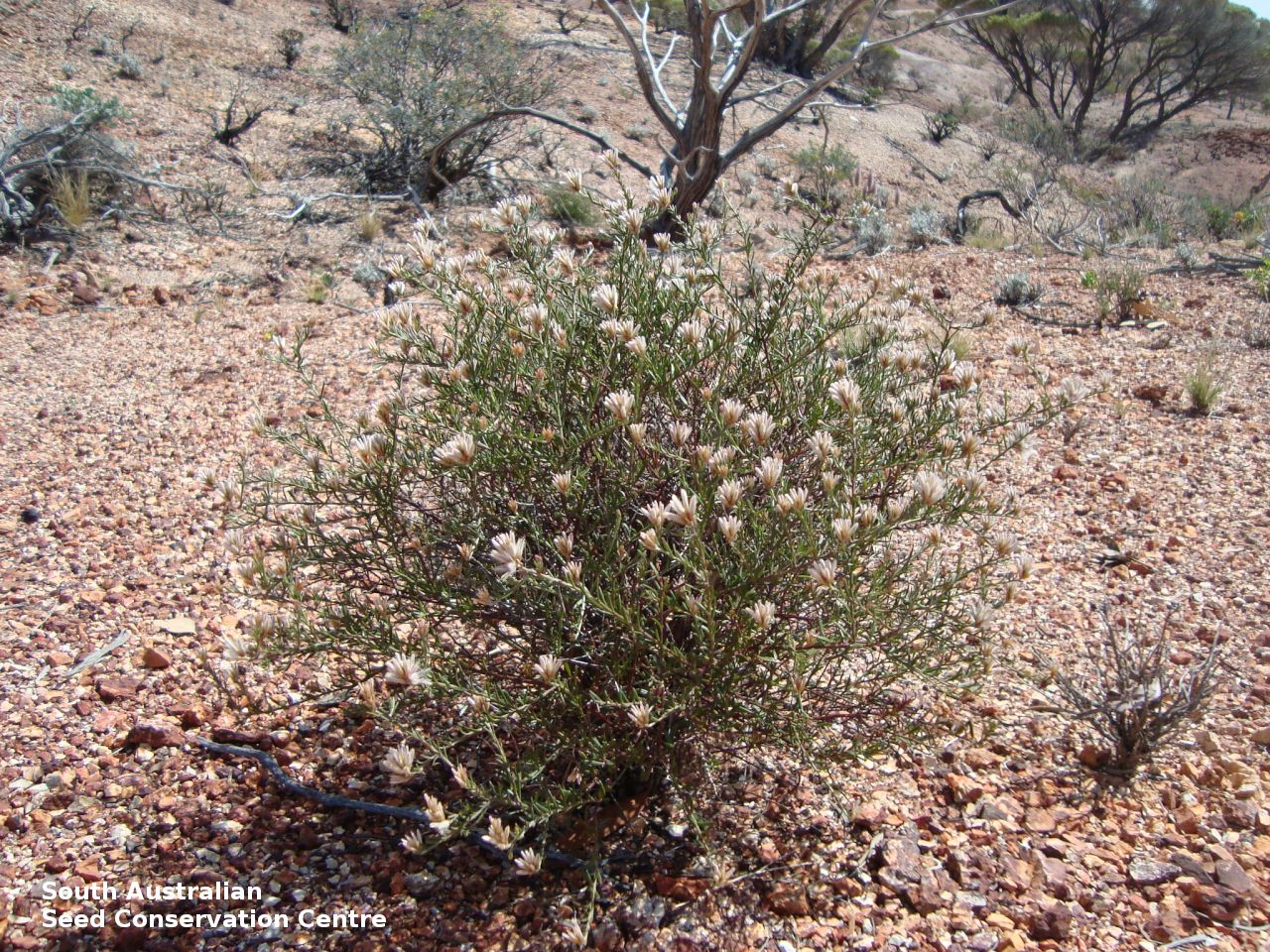
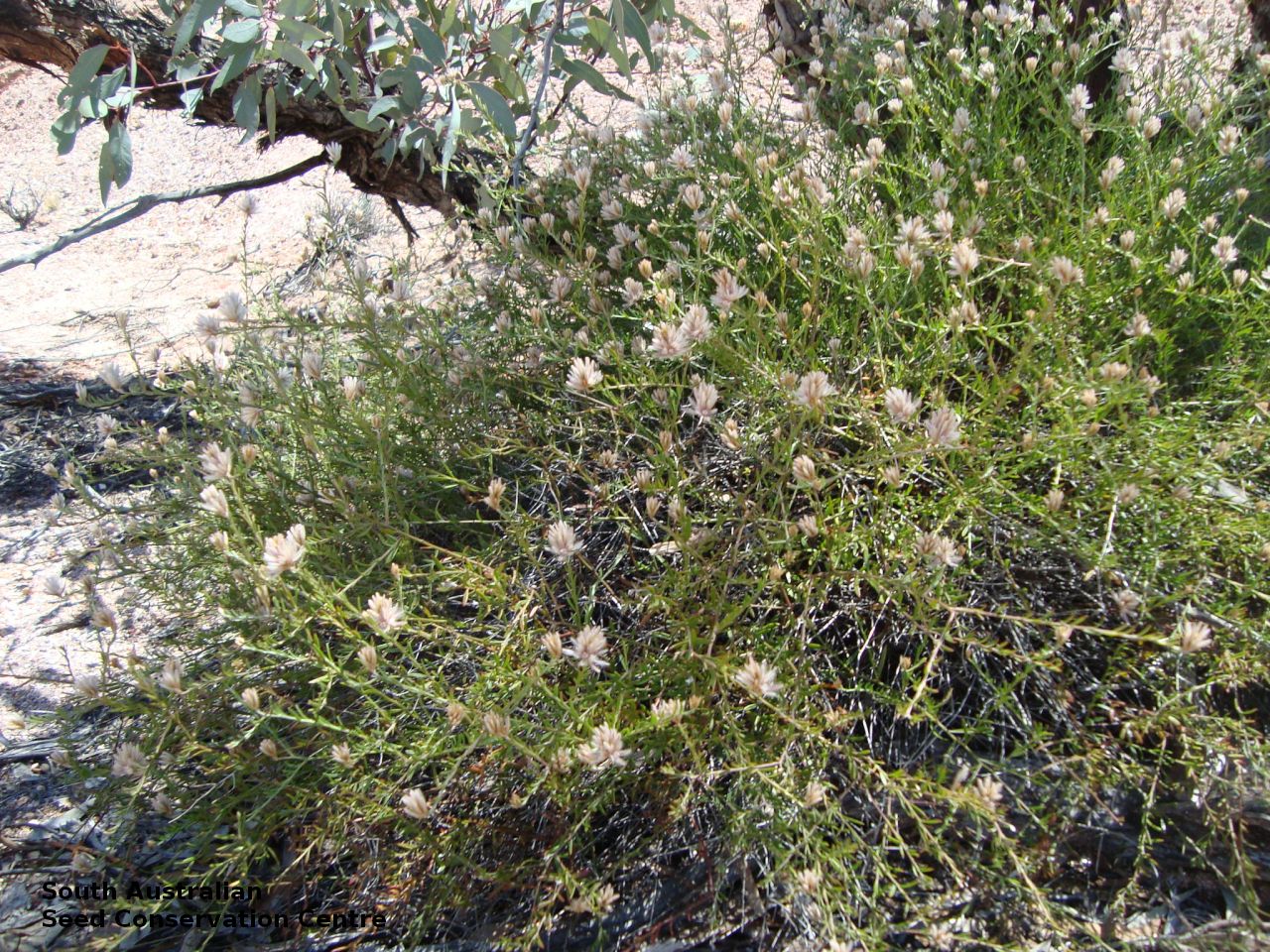

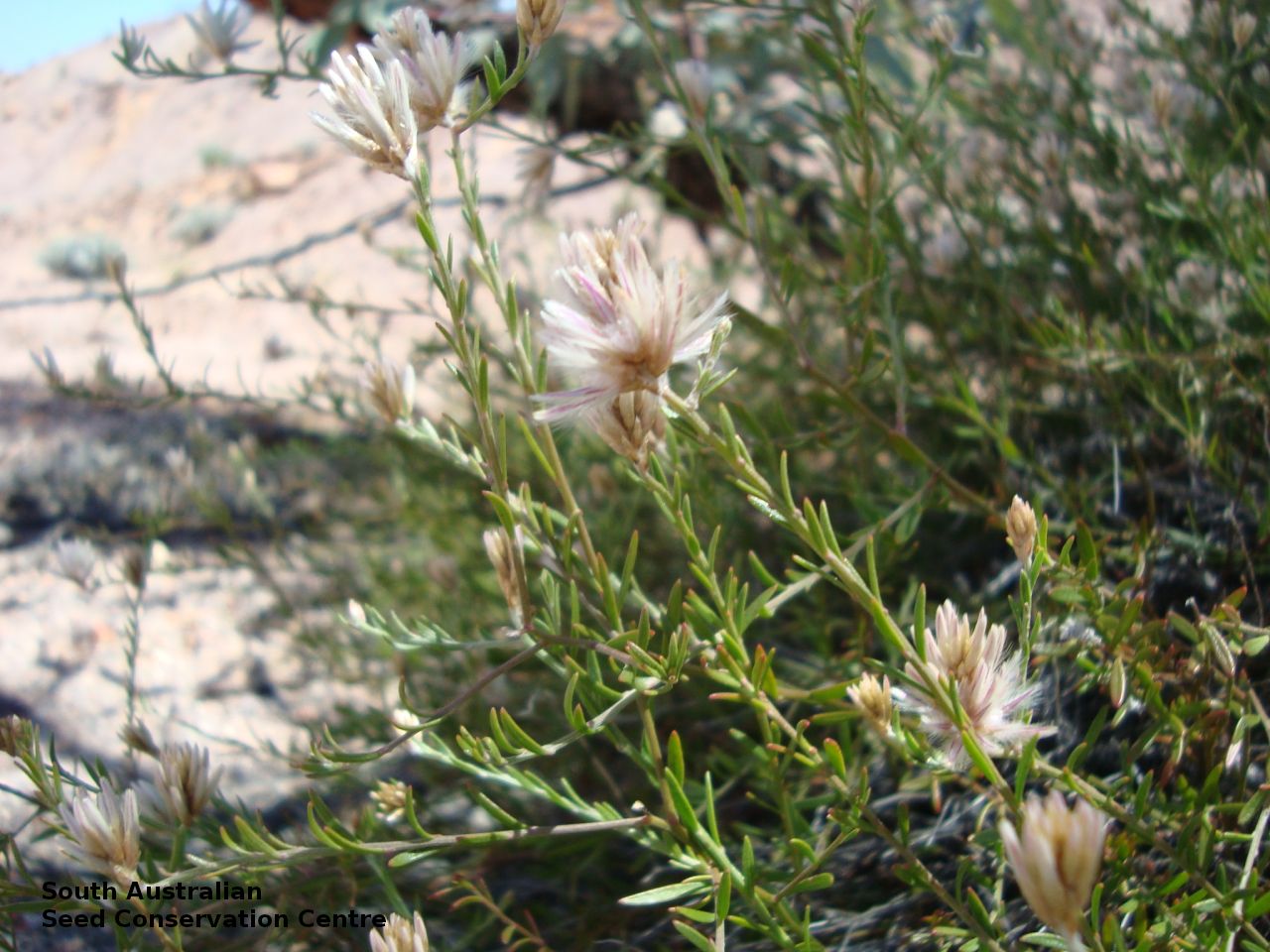
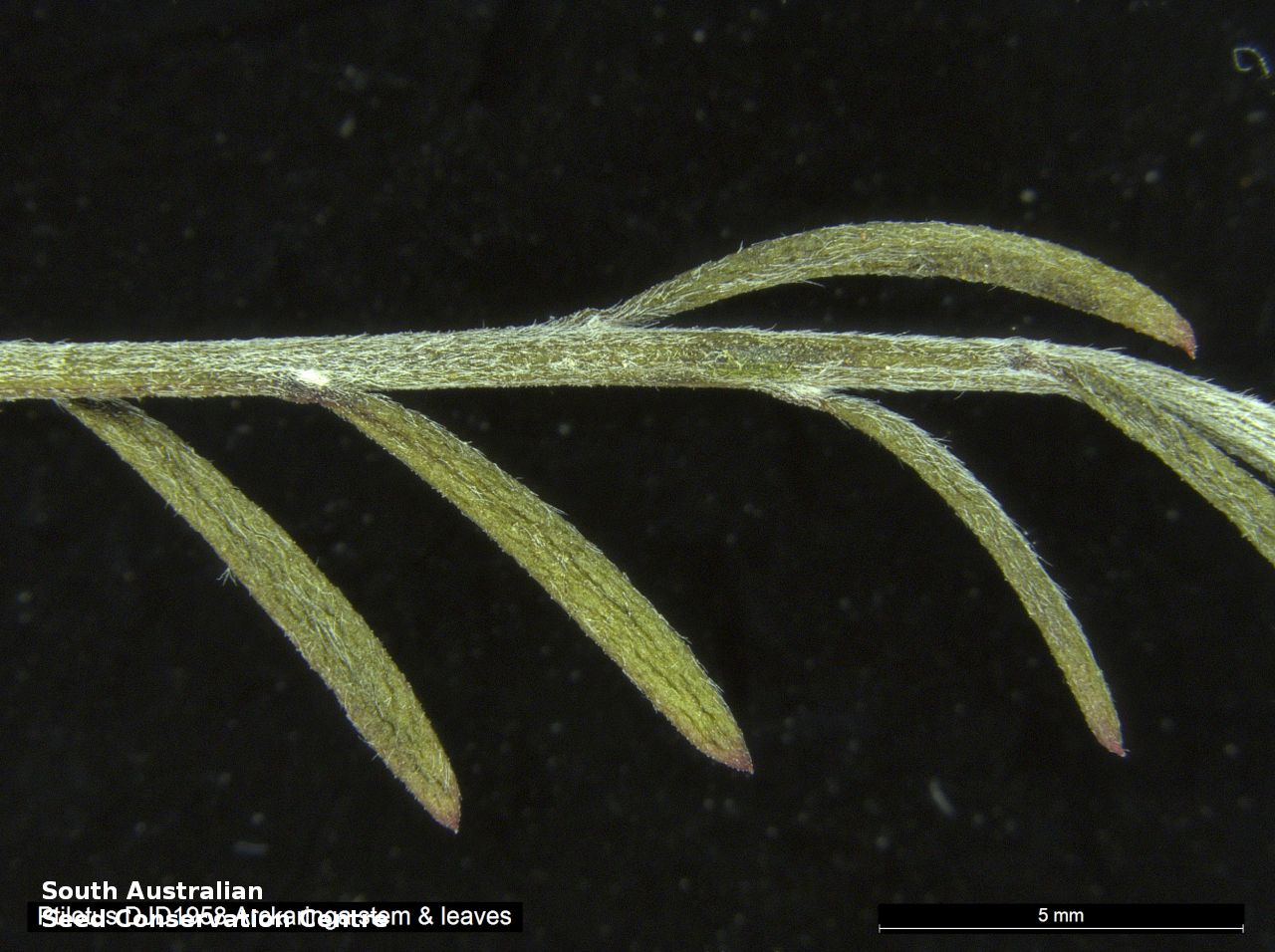

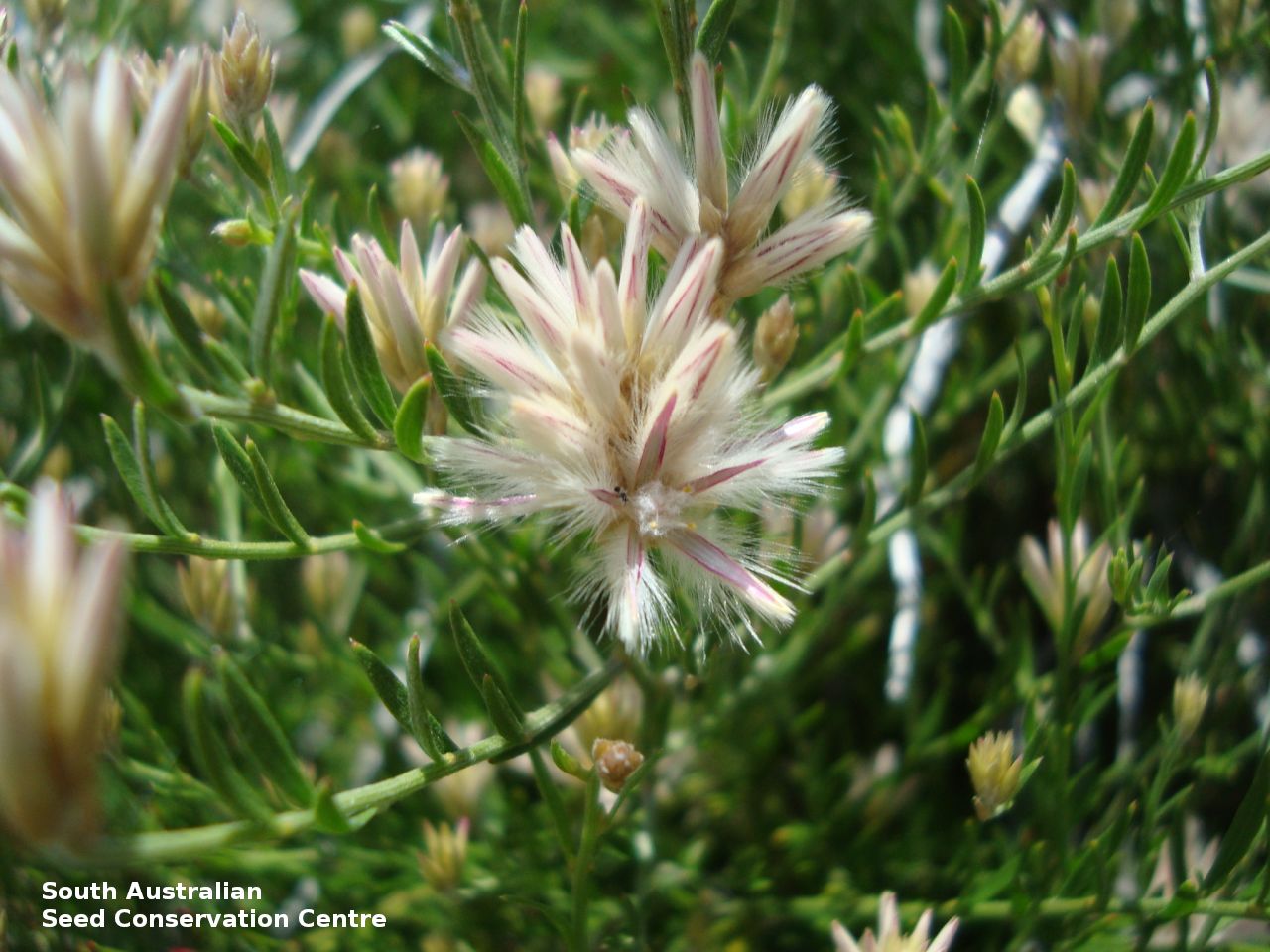
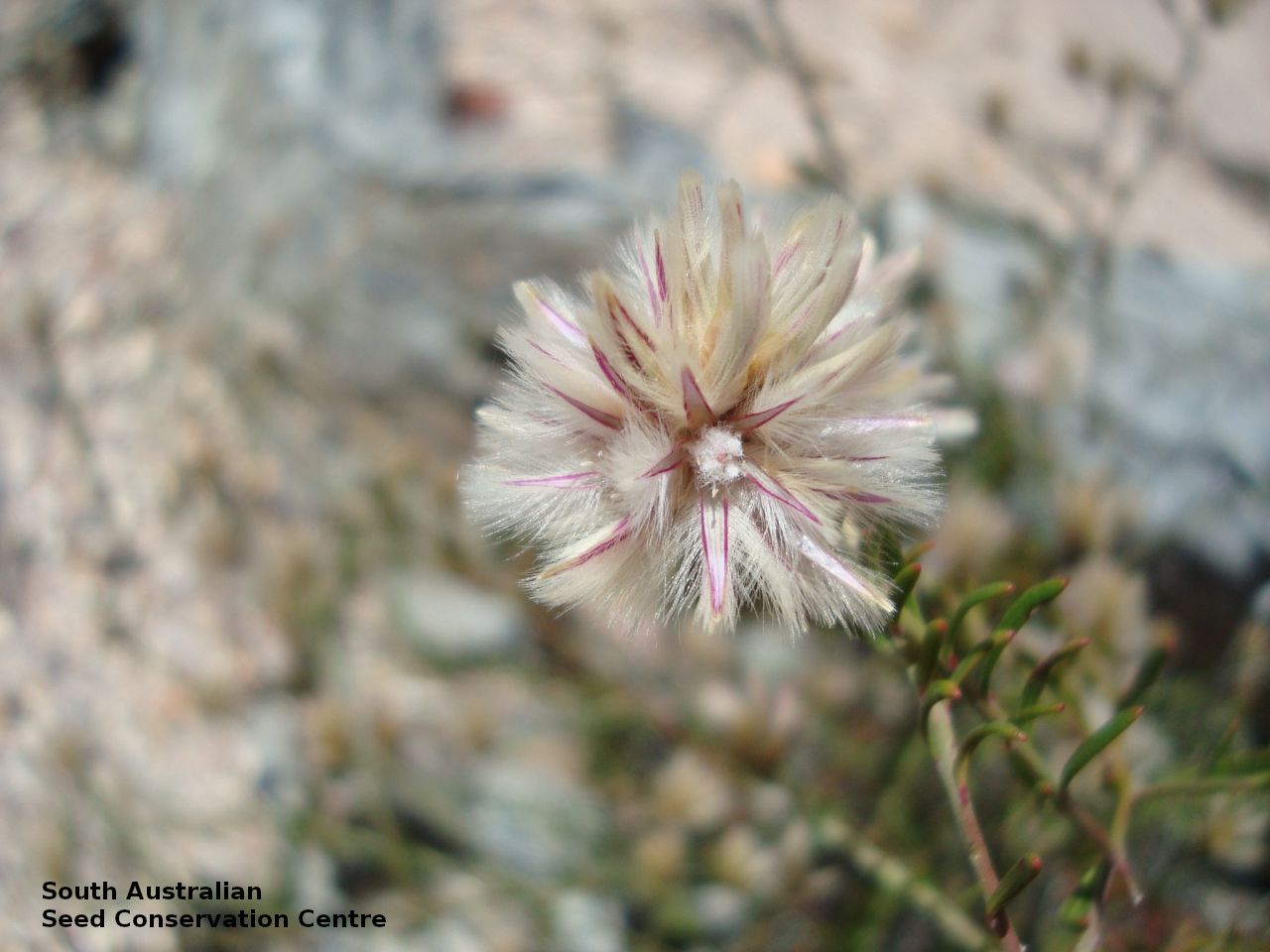
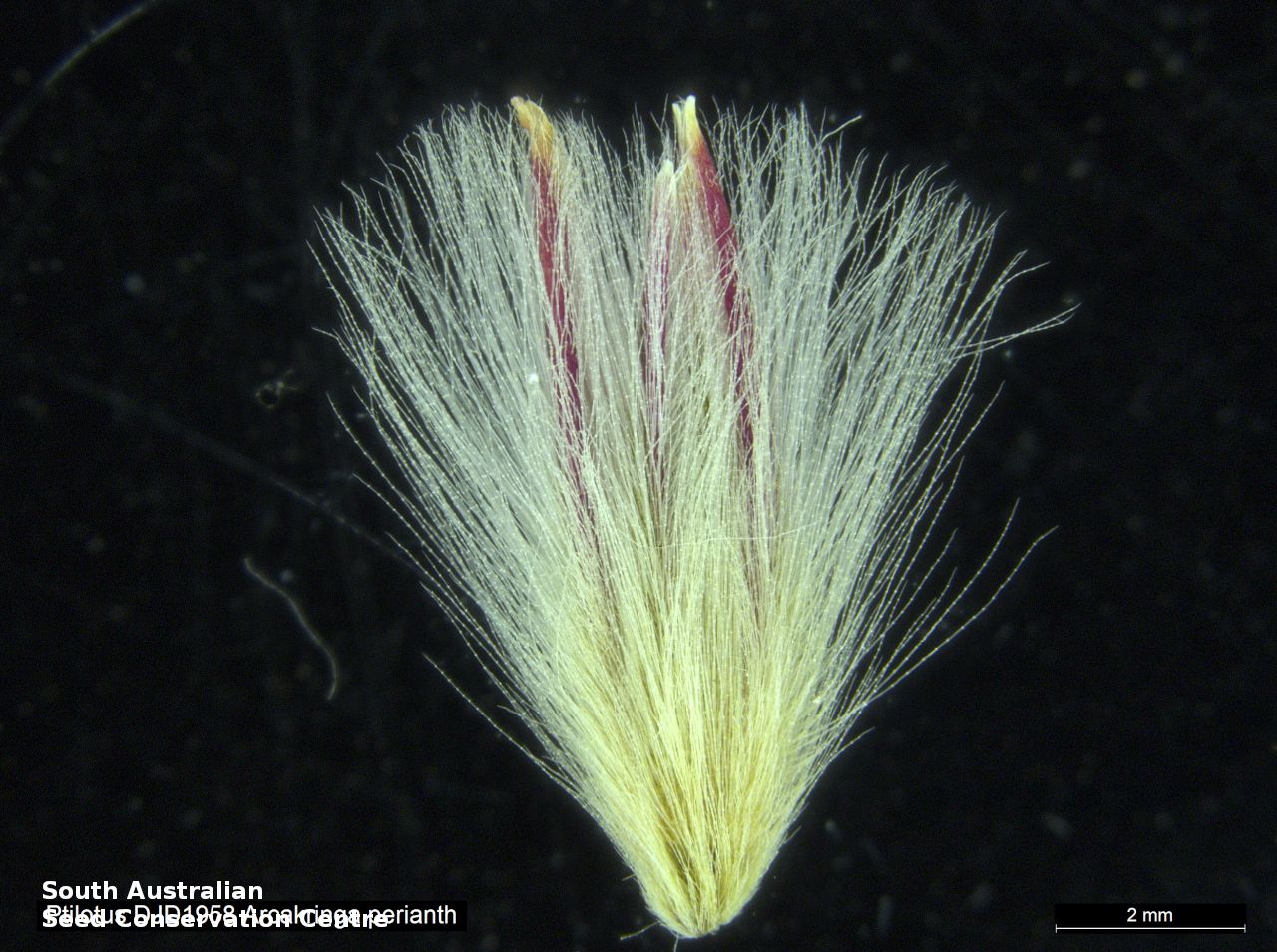
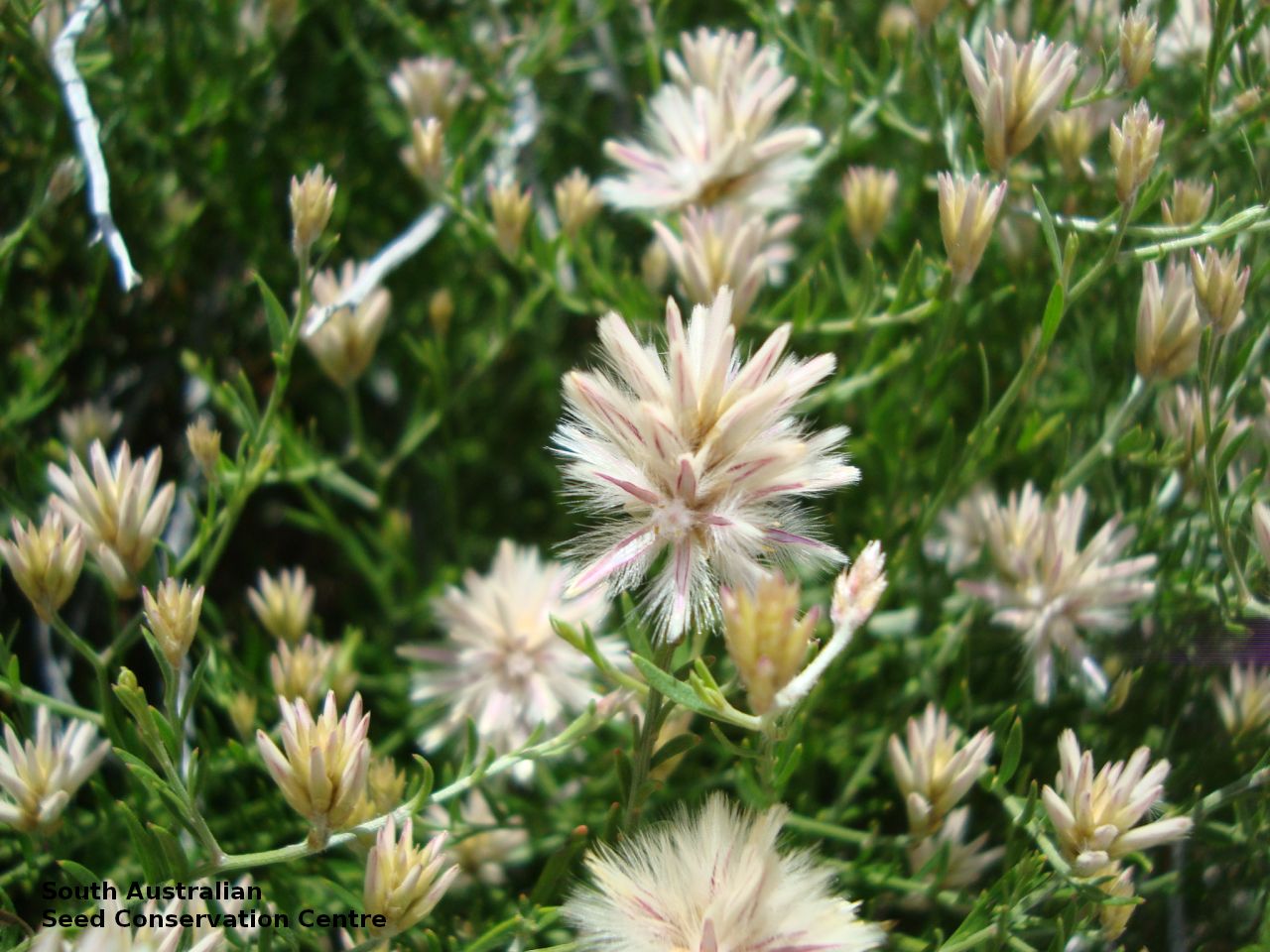

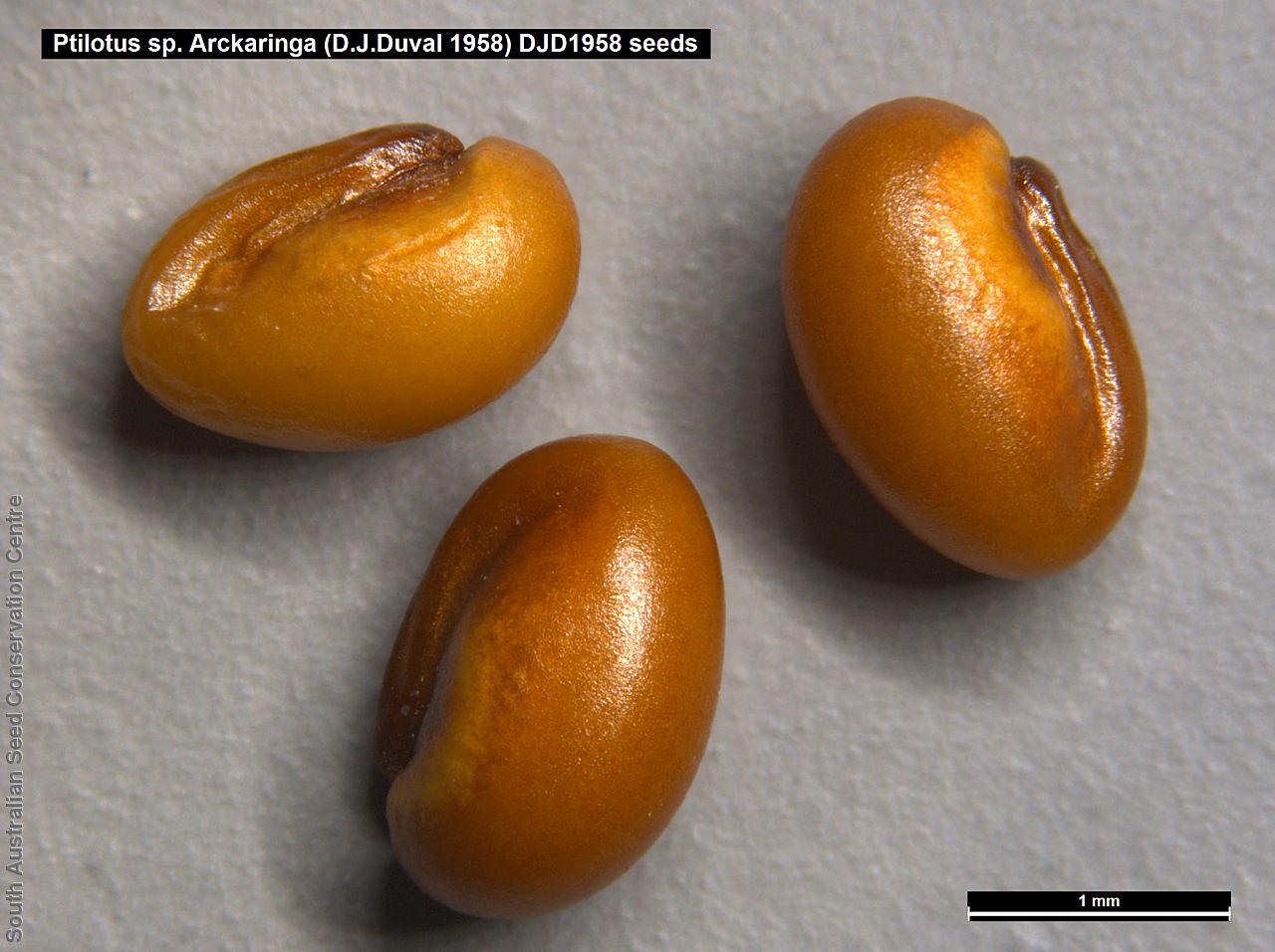


_ibra_896.png)
Etymology
Ptilotus from the Greek 'ptilotos' meaning feathered or winged; referring to the hairy flowers. Arkaringa manual script name referring to the location of the type specimen.
Distribution and status
Endemic to South Australia and found in the Arckaringa Hills, growing in the soft, eroding upper slopes of a dissected breakaway escarpment. Native. Very rare in South Australia.
Herbarium region: Lake Eyre
NRM region: South Australian Arid Lands
AVH map: SA distribution map (external link)
Plant description
Perennial twiggy shrub with stems and leaves covered in short hairs. Fruits are whitish to pale brown or pinkish ovoid head with containing numerous long papery and hairy fruits, each containing one seed. Seeds are orange-brown, reinform to 2.2 mm long and 1.2 mm wide. Seed embryo type is peripheral.
Seed collection and propagation
Collect seeds between October and December. Be very careful when collecting this species as the fruits contain fine hairs that may cause an allergic reaction for some people. Collect the fruit heads when dried to a white to pale straw colour. Each fruit should come off the head easily when fingers are rubbed up the stem. Collect more fruits than required as not all fruits contain viable seed. Be very careful when cleaning this species as the fruits contain fine hairs that may cause an allergic reaction for some people. To clean, rub the fruit heads gently to dislodge the seed at the base of each fruit. Use a sieve to separate the unwanted material. Store the seeds with a desiccant such as dried silica beads or dry rice, in an air tight container in a cool and dry place. Seed viability is usually high but seed availability tend to be low. Seeds are non-dormant, viable seed should germinate readily.
| Location | No. of seeds (weight grams) | Number of plants | Date collected | Collection number Collection location | Date stored | % Viability | Storage temperature |
|---|---|---|---|---|---|---|---|
| BGA | 350 (0.33 g) | 20+ | 14-Dec-2010 | DJD1958 Lake Eyre | 1-Jan-2012 | 90% | -18°C |
Number of plants: This is the number of plants from which the seeds were collected.
Collection location: The Herbarium of South Australia's region name.
% Viability: Percentage of filled healthy seeds determined by a cut test or x-ray.